TRANSLATION OF GEOMETRIC FIGURES
Subscribe to our ▶️ YouTube channel 🔴 for the latest videos, updates, and tips.
Subscribe to our ▶️ YouTube channel 🔴 for the latest videos, updates, and tips.
A translation is transformation in which every point of figure moves a fixed distance in a given direction.
- Number of units of horizontal movements can be considered as "x".
- Number of units of vertical movements can be considered as "y".
- Translation vector will be in the form (x, y)
- If x is positive, then we have to move x units to the right→
- If x is negative, then we have to move x units to the left ←.
- If y is positive, then we have to move y units up ↑ .
- If y is negative, then we have to move y units down ↓.
The object A has been translated to give an image B in each diagram. Give the translation in each case.
Problem 1 :
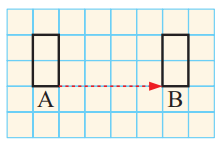
Solution :
Observing the vertex of A to vertex of rectangle B, only horizontal movement is done.
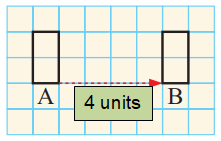
Moved 4 units right, so the required translation vector is (4, 0).
Problem 2 :
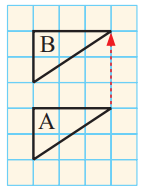
Solution :
Observing the vertex of A to vertex of triangle B, only vertical movement is done.
Moved 3 units up, so the required translation vector is (0, 3).
Problem 3 :
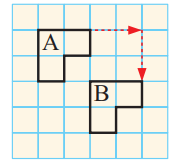
Solution :
Observing the vertex of A to vertex of B, both horizontal and vertical movements are done.
Number of horizontal movements = 2 (right, so +)
Number of vertical movements = -2 (down, so -)
So, the required translation vector is (2, -2).
Problem 4 :
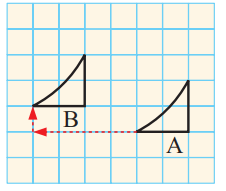
Solution :
Observing the vertex of A to vertex of B, both horizontal and vertical movements are done.
Number of horizontal movements = -4 (left, so -)
Number of vertical movements = 1 (up, so +)
So, the required translation vector is (-4, 1).
Problem 5 :
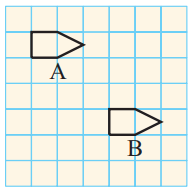
Solution :
Observing the vertex of A to vertex of B, both horizontal and vertical movements are done.
Number of horizontal movements = 3 (right, so +)
Number of vertical movements = -2 (down, so -)
So, the required translation vector is (3, -2).
Problem 5 :
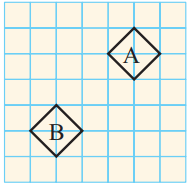
Solution :
Observing the vertex of A to vertex of B, both horizontal and vertical movements are done.
Number of horizontal movements = -3 (left, so -)
Number of vertical movements = -3 (down, so -)
So, the required translation vector is (-3, -3).
Problem 6 :
a) Write down the coordinates of A, B, C and D.
b) Each point is translated 5 units to the right and 2 units up. What are the coordinates of the image A', B', C' and D'
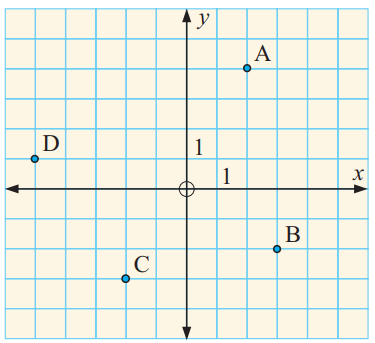
Solution :
A (2, 4), B(3, -2), C(-2, -3) and D(-5, 1).
5 units to the right, so +5
2 units up, so +2
|
A (2, 4) B(3, -2) C(-2, -3) D(-5, 1) |
A'(2 + 5, 4 + 2) B'(3 + 5, -2 + 2) C'(-2 + 5, -3 + 2) D'(-5 + 5, 1 + 2) |
A'(7, 6) B'(8, 0) C'(3, -1) D'(0, 3) |
Recent Articles
-
Finding Range of Values Inequality Problems
May 21, 24 08:51 PM
Finding Range of Values Inequality Problems -
Solving Two Step Inequality Word Problems
May 21, 24 08:51 AM
Solving Two Step Inequality Word Problems -
Exponential Function Context and Data Modeling
May 20, 24 10:45 PM
Exponential Function Context and Data Modeling